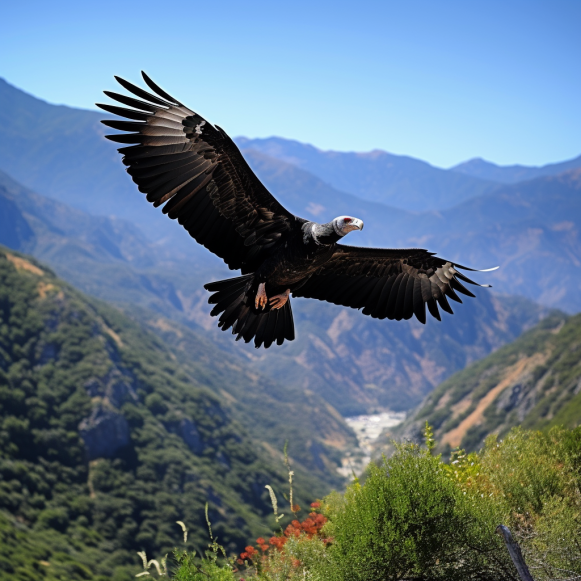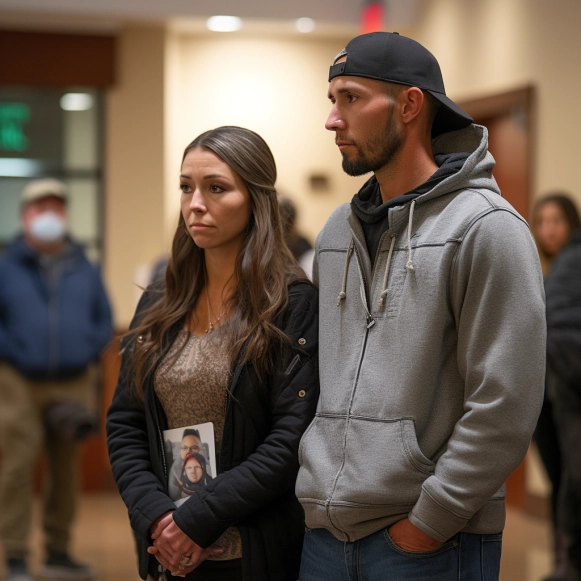California condor shot near Hollister, $5,000 reward offered

Less than 400 of the majestic birds live and fly in the wild
Federal authorities are looking for information about the shooting of an endangered California condor in San Benito County last year.
The bird, which was part of a flock based at Pinnacles National Park, was discovered shot multiple times and abandoned on private property off Lone Tree Road, east of Hollister.
“They are incredible animals,” said Joanna Gilkeson, a spokeswoman for the United States Fish and Wildlife Service, which is in charge of the investigation. “There are only about 300 wild individuals.” They are still critically endangered. It’s a big deal to lose even one. Every single bird is important. We are requesting that members of the public contact us if they have any information.”
The bird was a three-year-old male identified by researchers as #972.
It was discovered dead 13 months ago, in July of 2022. When biologists at Pinnacles National Park, about 30 miles south of Hollister, checked the animal’s transmitter, they noticed it had stopped moving, according to Gilkeson.
She stated that after park officials discovered the bird shot, they notified US Fish and Wildlife agents, who investigated but were unable to make any arrests.
“They were following up on leads, and now we’re asking for the public’s help,” she explained. “Someone might know something somewhere.”
The agency is offering a $5,000 reward for information leading to the conviction of the individual or individuals responsible for the condor’s shooting.
Anyone with information is asked to call the Service’s Office of Law Enforcement in Sacramento at 916-569-8478 or send an email to Special Agent Victoria Van Duzer at Victoria_Vanduzer@fws.gov. Callers can remain anonymous if they wish.
The California condor is North America’s largest bird. Their wingspan can reach up to 9 feet across.
They used to range from British Columbia to Mexico. However, due to habitat loss, hunting, and lead poisoning, the majestic birds had plummeted to a low of just 22 in the early 1980s.
Federal biologists captured all of the remaining wild condors in 1987 and began breeding them in the Los Angeles Zoo, San Diego Zoo, and other facilities in a desperate attempt to prevent extinction. The population of the birds has gradually increased as their offspring have been released back into the wild at Pinnacles National Park, Big Sur, near the Grand Canyon, Kern County, Baja, Mexico, and, most recently, near Redwood National Park.
In 2003, the first condors were released at Pinnacles. The first wild-born condors were born in 2007.
There are 559 California condors as of this week, with 345 in the wild — 93 of which are in California — and 214 in zoos and other wildlife facilities.
The birds have faced a number of difficulties in recent years. In 2020, the Dolan Fire in Big Sur killed 12 endangered birds and destroyed a release facility run by the non-profit Ventana Wildlife Society.
Except for $55,000, the society has raised nearly all of the $865,000 needed to rebuild the facility. It is currently under construction and is expected to be completed later this year. The birds also suffered a setback this spring, when 21 died in Arizona and Utah from avian influenza. However, federal biologists have been immunizing the birds, and the spread appears to have ceased.
Lead poisoning is the most common cause of death for California condors, which occurs when they eat deer and other animals killed by hunters.
Although former California Governor Jerry Brown signed legislation prohibiting the use of lead bullets in hunting, some hunters continue to use lead ammunition because it is less expensive. Condors have also died from infections and electrocution after colliding with power lines.
Matthew Paul Gumz, 39, of Barstow, was charged with illegally shooting a California condor in 2017. Prosecutors claimed Gumz had been hunting deer in Kern County’s Bean Canyon area, which is managed by the Bureau of Land Management. Gumz gutted and hung a dead deer from a tree before fleeing. When Gumz returned, he allegedly saw condors and other birds near his deer and shot and killed condor #780 with a rifle.
He faced a $100,000 fine and a year in prison. In a plea agreement with the US Department of Justice in 2019, he pleaded guilty to one count of unlawfully killing and endangering an endangered species, paid $14,460 in fines and restitution, and was sentenced to 18 months on probation.





